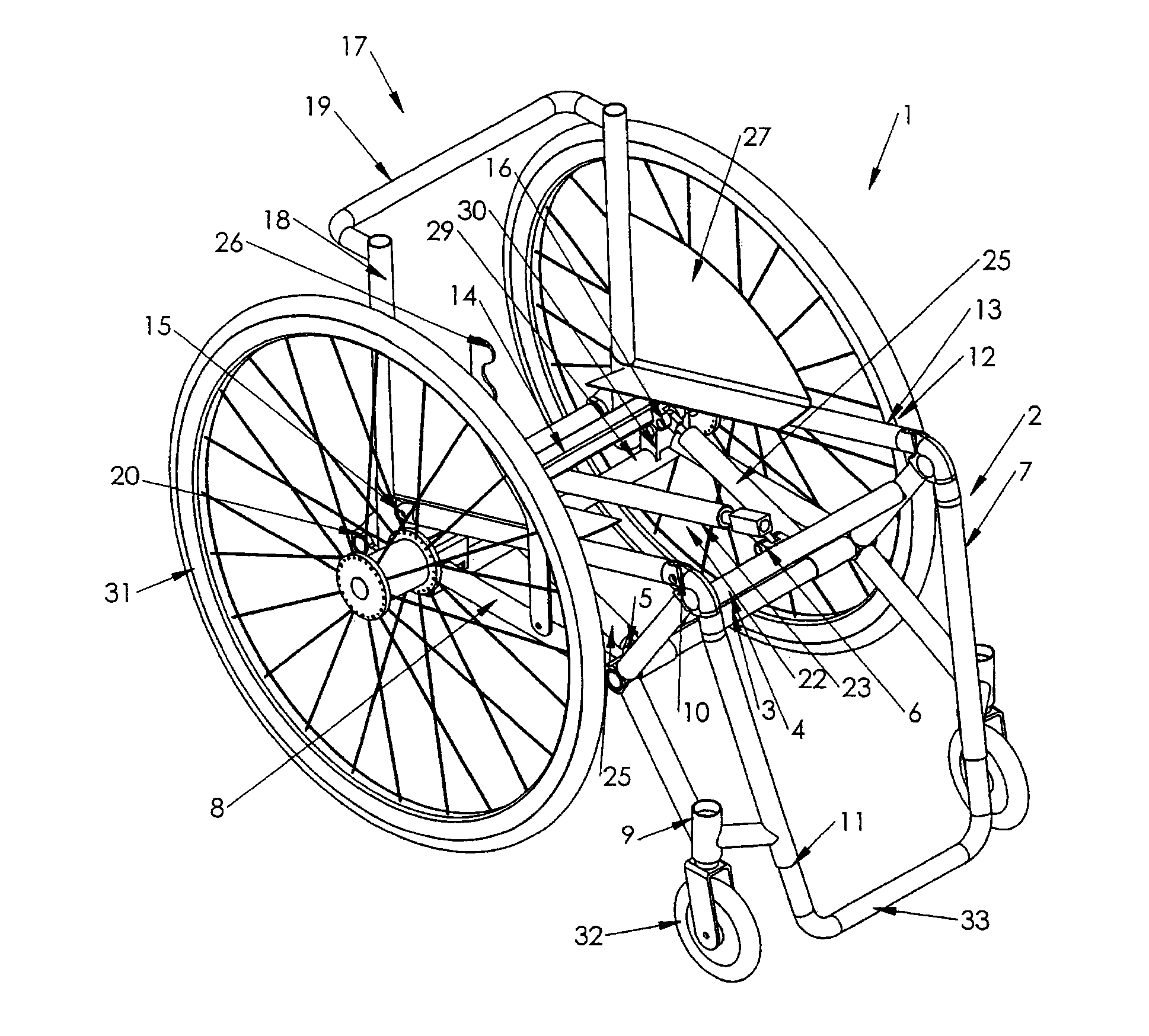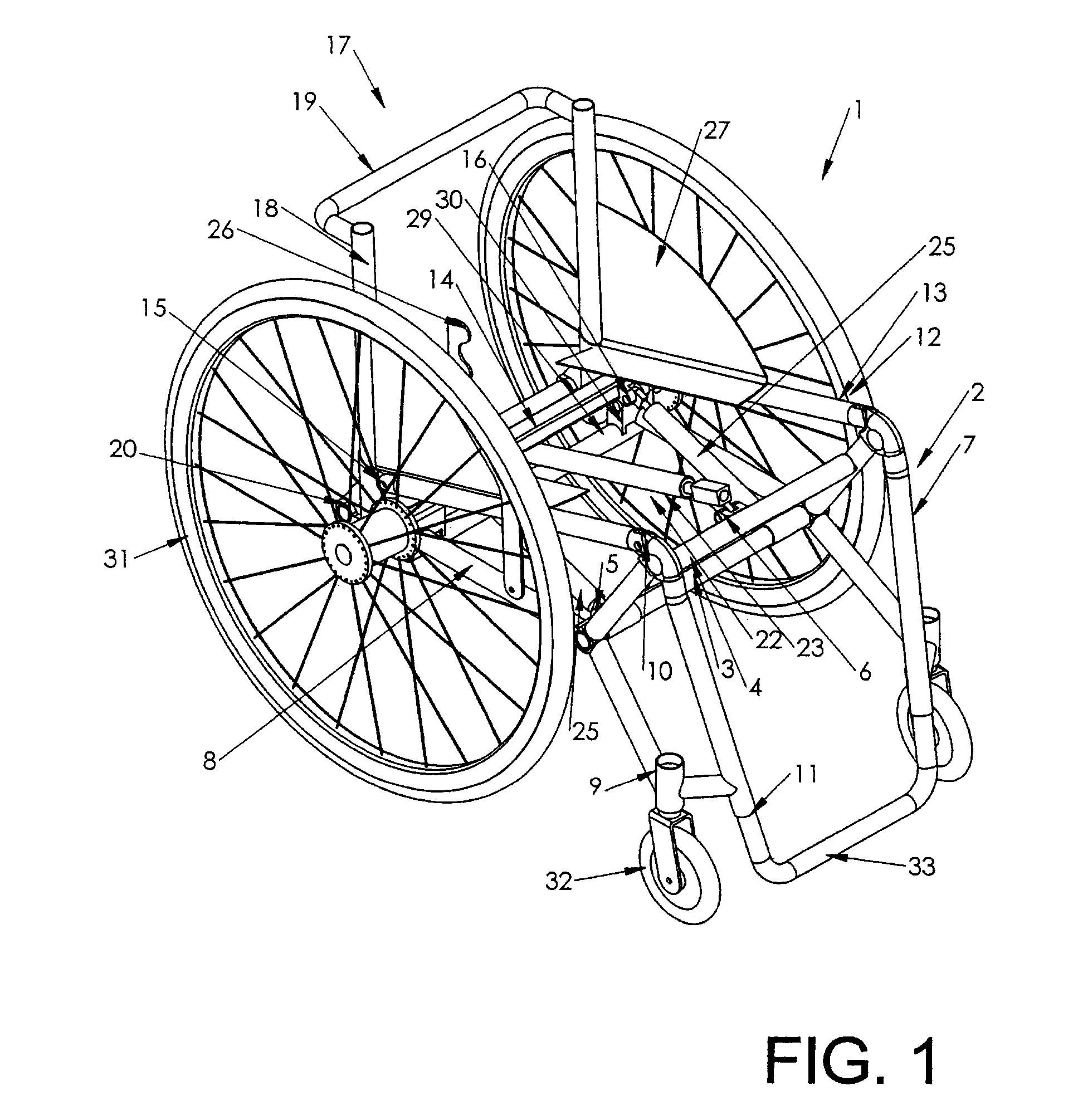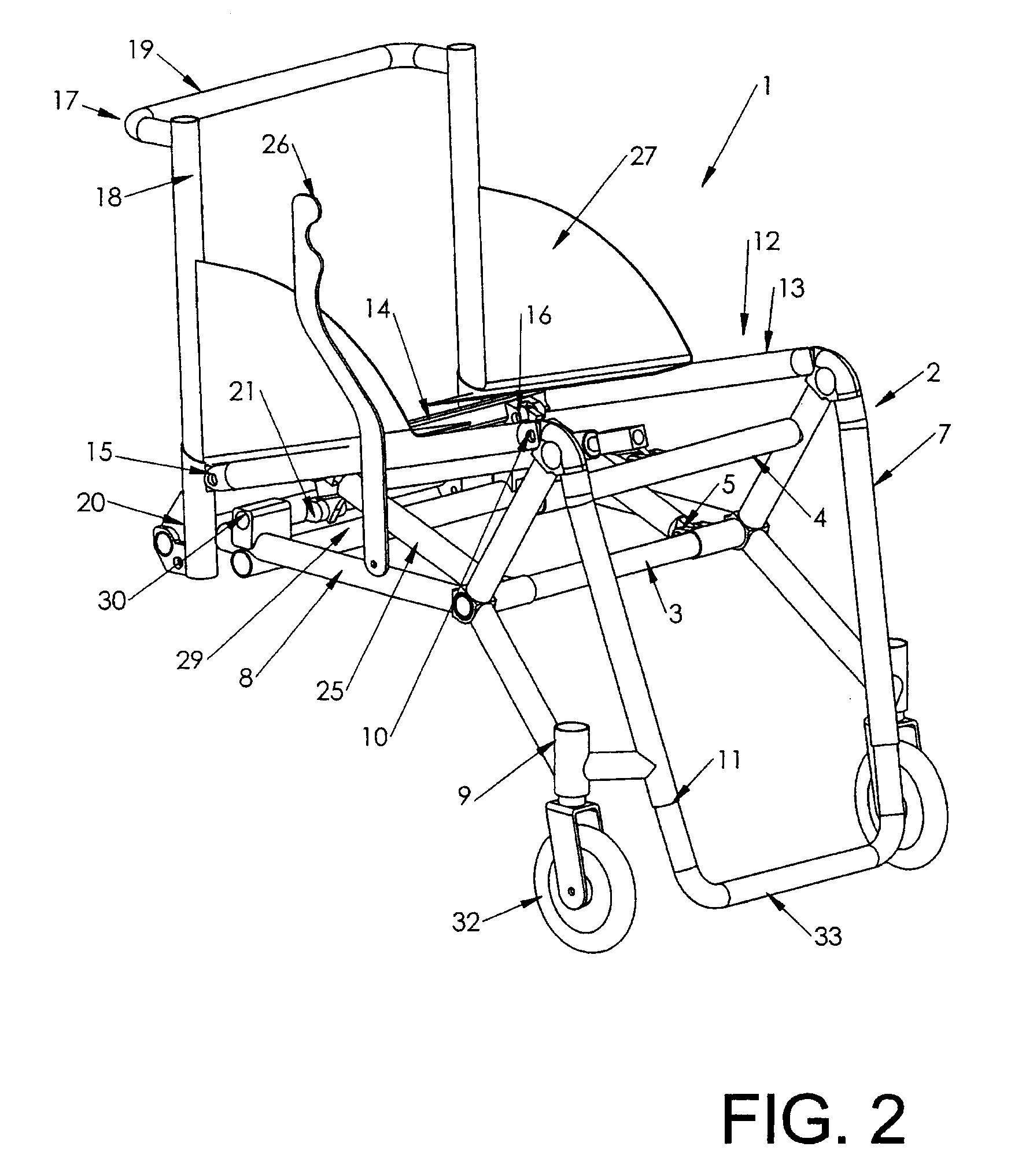Wheelchair
a wheel chair and seat technology, applied in the field of wheel chairs, can solve the problems of user inability to easily alter the selected configuration, user's weight, and user's inability to use, and achieve the effect of convenient and efficient self-propulsion, constant knee height position, and convenient access
- Summary
- Abstract
- Description
- Claims
- Application Information
AI Technical Summary
Benefits of technology
Problems solved by technology
Method used
Image
Examples
Embodiment Construction
[0022]Directional terms such as “left”, “right”, “horizontal”, “vertical”, “transverse” and “longitudinal” are used in this description merely to assist the reader to understand the described embodiments and are not to be construed to limit the orientation of any described method, product, apparatus or parts thereof, in operation or in connection to another object.
[0023]Referring to FIGS. 1 to 5 and according to one embodiment of the invention, a wheelchair 1 is provided having a seat assembly 12 having a front end that is pivotably coupled to a wheelchair frame 2 such that the seat assembly 12 height is adjustable relative to the frame 2. The seat assembly 12 is suspended by a pair of gas springs 25 which are adjustable to adjust the seat assembly 12 height relative to the frame 2 as well as to serve as shock absorbers to cushion a user during wheelchair travel.
[0024]Referring particularly to FIGS. 2 and 3, the frame 2 comprises a transversely-extending middle cross member 3 and a ...
PUM
 Login to View More
Login to View More Abstract
Description
Claims
Application Information
 Login to View More
Login to View More - R&D
- Intellectual Property
- Life Sciences
- Materials
- Tech Scout
- Unparalleled Data Quality
- Higher Quality Content
- 60% Fewer Hallucinations
Browse by: Latest US Patents, China's latest patents, Technical Efficacy Thesaurus, Application Domain, Technology Topic, Popular Technical Reports.
© 2025 PatSnap. All rights reserved.Legal|Privacy policy|Modern Slavery Act Transparency Statement|Sitemap|About US| Contact US: help@patsnap.com



